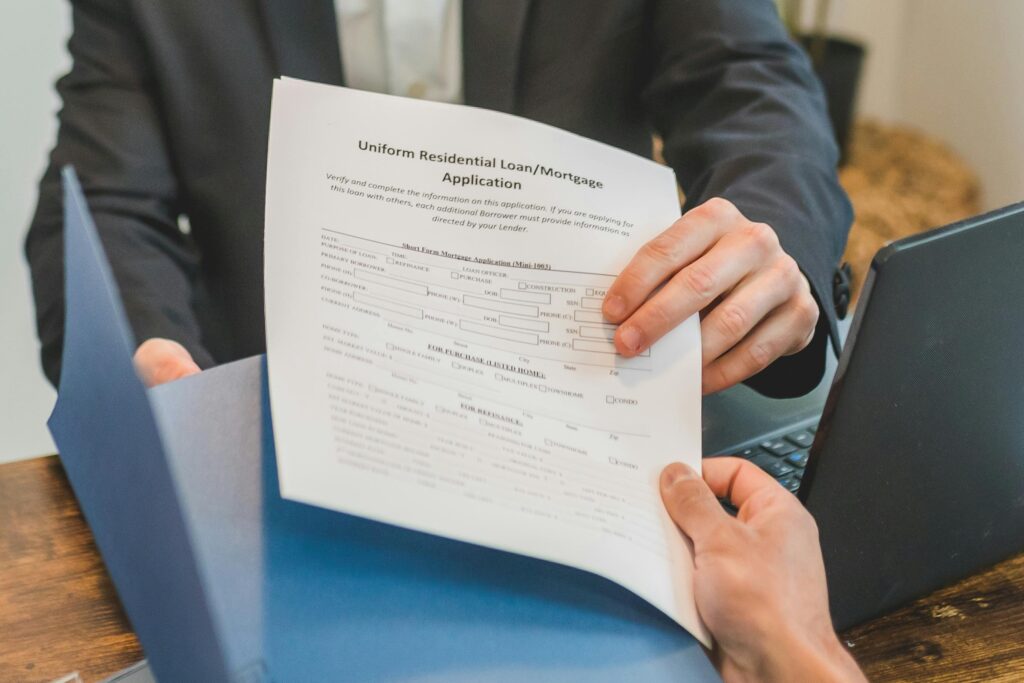Building software is hard. Protecting it shouldn’t be. If you’re a founder, engineer, or inventor working with AI, machine learning, or smart software systems, you’re sitting on something valuable. But here’s the thing: if you don’t protect it, someone else can take it, use it, or patent it themselves. That’s the scary part.
What Makes AI Software Patents So Different?
You’re Not Just Writing Code—You’re Building Intelligence
When you’re working with AI, you’re not just building a simple app.
You’re creating something that can learn, change, and make decisions. That’s powerful—and also tricky to patent.
Patents are supposed to protect how something works, not just what it does. With normal software, that’s already a challenge.
But with AI? It’s a moving target. The system might evolve after it’s deployed. The data might change.
The results might improve over time. That’s the magic of AI. But it also makes it harder to explain clearly what you invented.
And here’s the real kicker: patent reviewers need to understand what you built and why it’s different from other stuff that already exists.
If your explanation is too vague or too technical, they’ll reject it.
If it sounds like you’re patenting an idea instead of a real invention, they’ll reject it.
And if you leave out key details because “that’s obvious to any AI engineer,” they’ll definitely reject it.
So what do you do? You write your patent like you’re explaining your invention to a very smart person who doesn’t know your tech at all.
You spell things out. You describe what your AI does, how it does it, and how it’s different from old-school solutions.
AI Inventions Need More Than Just Code Descriptions
Here’s a mistake we see a lot: founders just paste in some Python or TensorFlow code and think that’s enough. It’s not.
Patents aren’t about protecting your source code.
They’re about protecting your system—the way your code interacts with data, users, environments, and decisions.
For AI, that means talking about the model’s structure, the data pipeline, the training loop, the decision logic, and the performance improvement over time.
It’s like this: if you invented a machine that can find diseases in X-rays better than a doctor, you’re not just protecting the lines of code.
You’re protecting the way the machine takes in data, learns from new cases, adapts to different image types, and delivers answers with high accuracy.
That’s what makes your invention special.
What Reviewers Look for in AI Patent Applications
Patent reviewers are trained to spot red flags in software patents. When it comes to AI, they’re extra cautious.
Why? Because AI patents can sometimes look too much like “just an idea,” and not a real, working invention.
They’re looking for clear technical improvements.
They want to see that your system doesn’t just do something cool—but does it in a way that’s better, faster, or more efficient than before.
They want to know how your model is trained. What kind of input data it needs. How it avoids bias or noise.
How it handles edge cases. How it improves over time.
If you leave those things out, your application feels empty—even if your code is amazing.
The good news? You don’t have to guess at this.
With PowerPatent, you get help from real patent attorneys who know how to translate your AI work into solid patent language.
Plus, our software helps you organize your technical details in a way that makes the invention easy to understand—and hard to reject.
How to Explain Your AI Invention So Anyone Can Understand It
Talk Like You’re Explaining It to a Smart Friend
The biggest mistake engineers make when writing about their AI invention? They explain it like they’re writing a research paper.
They throw in all the buzzwords. They talk about “hyperparameters,” “gradient descent,” or “latent space” like everyone knows what that means.
Here’s the problem: the person reading your patent probably isn’t an AI expert. They might be smart.
They might even be technical. But they’re not deep into your domain.
So if your patent sounds like a whitepaper, you lose them. And if they don’t get it, they can’t approve it.
You want your patent to read like you’re explaining your invention to a super-smart friend who doesn’t do machine learning.
Someone who’s curious, but not familiar with your model or your stack. That means simple words. Clear logic. Real-world examples.
For example, don’t say “a novel convolutional neural network architecture with multi-scale feature fusion.”
Say “a system that looks at pictures and finds patterns at different zoom levels to make better predictions.” That’s the level of clarity that sticks.
Show What Problem You’re Solving—and How You Solved It
Every strong AI patent starts with a clear problem. What was broken?
What didn’t work well before? What’s hard about solving that problem?
Then it moves into the solution. What did you build? How does it actually work? What’s different about the way your system handles it?
That’s where you go deeper. You don’t just say, “We use AI to detect fraud.”
You say, “We built a system that looks at thousands of signals—like transaction speed, location, device history—and learns to detect patterns that look suspicious.
Unlike traditional rule-based systems, ours adapts as fraud behavior changes.”
Now the reviewer gets it. They see the value. They see the improvement. And they see that you built something real, not just an idea.
Be Specific About Your AI System
You don’t need to show all your code. But you do need to give enough detail that someone else could build a similar system based on your patent.
That means being clear about your inputs. What kind of data does your AI use? Images? Text? Audio? Sensor data?
What kind of preprocessing does it need? How do you train it? What kind of architecture are you using? CNNs? RNNs? Transformers?
You should also describe your outputs. What does your AI system actually deliver? A prediction?
A classification? A score? An action? And how is that used?
Then explain the flow. How does the data go from raw input to final output? What steps are taken? What’s automated? What’s learned over time?
This might sound like a lot. But it’s exactly what separates a weak patent from a strong one.
You’re not trying to hide your secret sauce—you’re claiming it. You’re saying, “This is how we built it. This is why it works. This is ours.”
And again, you don’t have to figure it all out alone.
PowerPatent helps you break this down into pieces, so your final application is clean, complete, and clear to anyone reading it.
What to Avoid When Writing AI Patents
Don’t Try to Patent an Idea—Patent an Actual System
Let’s say you have a big idea: “What if we used AI to predict when a machine might break down?” That’s smart. But it’s not patentable.
Ideas aren’t enough. You have to show how you made it real.
What kind of AI? What kind of data? How does it actually work? What makes it different from other predictive systems?
If your application sounds like you’re just claiming “using AI to solve X,” it’s going to get rejected fast.
Patent reviewers have seen that before. They need to see the engineering, not just the ambition.
You need to show the inner workings. How the model was trained. How it processes new data.
What signals matter. How it avoids mistakes. That’s where the value is—and that’s what gets protected.
Don’t Skip the Data Story
AI lives on data. And patent reviewers want to know how you use it.
Where does your training data come from? Is it labeled or raw? What formats? Do you clean it? Normalize it?
Augment it? These steps can be just as innovative as the model itself.
How about feedback loops? Does the system get better over time? If so, how does it re-train itself?
Does it keep improving automatically or only after a human checks it?
And what about bias? If you’ve solved a tricky issue like removing bias or improving generalization across different inputs, that’s gold. Talk about it.
That shows depth and real-world awareness.
Skipping the data part is like showing someone a great meal without telling them what’s in it.
If they don’t know the ingredients, they won’t trust the result.
Don’t Assume the Reviewer Understands Your Stack
Even if you use well-known tools—PyTorch, Keras, OpenAI APIs—don’t assume the person reading your patent knows how those work.
Spell out what you did. Don’t just say, “We used GPT for this task.”
Say, “We used a pre-trained language model fine-tuned on legal contracts to extract key clauses and flag risky language.”

See the difference? One version is a name-drop. The other actually explains the work.
When you’re too vague or rely too much on trendy tools, your patent sounds thin.
But when you explain your architecture, your flow, and your reasoning, it sounds solid.
That’s why PowerPatent guides you to document each step of your invention—not just the high-level result.
We help you make sure your AI patent actually says what it needs to.
Writing Claims That Actually Protect Your AI Invention
Claims Are the Heart of Your Patent
Claims are where the rubber meets the road. They’re not just part of the application—they define exactly what you’re protecting.
This is what investors, competitors, and courts look at. So getting your claims right is everything.
A lot of founders mess this up. They either go way too broad, like “a system that uses AI to recommend things,” or too narrow, like “a system that uses a three-layer neural network trained on CSV files with batch size 32.”
Both can backfire.
Too broad? Your claim might get rejected because it’s not specific enough to show a real invention. Too narrow?
You just boxed yourself in. Now your competitor can tweak one tiny detail and build something similar without violating your patent.
The trick is to write claims that are both specific and flexible. You want to cover what makes your invention special—but in a way that gives you room to grow.
Think of your claims like a fence. Too small, and you don’t protect much. Too big, and it falls down.
The sweet spot is a strong fence around what you actually invented, with space to evolve.
How to Write AI Claims That Stick
Start by focusing on your system as a whole. Not just the model.
Not just the output. But how everything works together. The inputs. The training. The decisions. The improvements over time.
You might write a claim that covers: a method for receiving input data, processing it using a trained model, generating predictions, and refining the model based on new feedback.
That gives you a framework that applies to a lot of real-world setups.
Then think about variations. Maybe your system works with images, text, or time-series data. Maybe it adjusts itself based on real-time results.
Maybe it combines human input with machine output. Those details help you lock in what makes your system different—and better.
Also, don’t forget about hardware. If your AI invention runs on edge devices or uses a special setup to process data faster or with less power, that’s huge.
You can protect that too.
And if this all sounds overwhelming, it doesn’t have to be.
PowerPatent’s platform helps you draft strong claims with help from attorneys who know what works.

So instead of guessing, you get expert input—and peace of mind.
Avoid Common Claim Pitfalls
Here’s what you want to avoid: using vague words like “intelligent,” “smart,” or “AI-powered.”
Those sound cool but mean nothing legally. Instead, describe exactly what your system does and how it does it.
Also, don’t focus only on the model. AI is more than just a neural net.
The data pipeline, feedback loop, user interface, and even the real-world application all matter.
If you leave those out, your claims may not cover the full value of your invention.
And remember: claims are read by humans. If they’re hard to follow, they won’t hold up. Clear, simple language wins every time.
With PowerPatent, your claims aren’t just copy-pasted legal talk. They’re tailored to what you built—real protection for real inventions.
Timing Matters: When to File Your AI Patent
Filing Early Gives You the Strategic Edge
In the world of AI, timing isn’t just a detail—it’s your competitive advantage.
The moment your team builds something that works differently or better than what’s already out there, you’ve created a potential patent.
And locking that in early can change everything for your business.
Filing early doesn’t just protect you from competitors. It also positions you as the first mover in your space. Investors notice that.
Partners respect that. And if you’re ever in a negotiation—around funding, M&A, or licensing—having that “patent pending” status gives you leverage.
It tells the world you didn’t just build something smart—you secured it.
But there’s another layer to this: AI patents often support broader strategic goals. Maybe you’re planning to launch a new product line next quarter.

Maybe you’re going to pitch to enterprise customers. Maybe you’re talking to potential acquirers.
In all of those cases, being able to say “we’ve filed patents for this technology” adds weight. It shows foresight, professionalism, and long-term thinking.
If you know a big business milestone is coming up, get your patent work done beforehand.
Don’t let IP be the thing you’re scrambling to fix at the last minute. It’s not just a legal task—it’s a growth move.
Use Provisional Patents as a Launchpad
One of the smartest tools in your toolbox is the provisional patent. It’s fast, flexible, and low-cost.
And for AI inventions, it’s the perfect way to secure your early work while giving yourself space to refine it.
A provisional patent lets you lock in your priority date without needing to finalize all the formal legal claims right away.
That’s huge in a fast-moving AI project, where your model might be changing weekly.
As long as you clearly describe the core of what makes your system novel, you can file early and build on it.
The key is to treat the provisional as a launchpad, not a placeholder. Don’t file something vague and hope to fix it later.
File something real. Something detailed. Something that reflects the real tech you’ve built so far.
Then keep documenting your improvements as you go. You can include those in a full non-provisional filing later.
PowerPatent makes this process super simple.
You can use our software to generate a clear, detailed provisional application quickly—based on what you already have.
Then, when it’s time to convert it into a full patent, you’ve got a solid head start.
Filing Can Be a Way to Think More Clearly About What You’ve Built
Here’s something most people don’t realize: filing a patent forces clarity.
It makes you step back and ask, “What exactly did we build? What part is truly different? What problem did we solve in a new way?”
That exercise can be incredibly valuable—especially in AI, where things can feel abstract. When you write your patent, you have to get specific.
You have to explain the system, the logic, the flow. And that process often reveals insights about your product that help you improve it.
You might discover ways to streamline your architecture. You might realize you’ve built something that can be used in more places than you thought.
Or you might spot a missing link that’s worth fixing before launch.
In that way, filing a patent isn’t just about protection—it’s about refinement. It’s a way to level up your own understanding of what you’ve created.
Use Timing to Outpace Competitors, Not Just Match Them
Finally, think of your patent strategy as a way to stay ahead—not just keep up.
If you’re watching what others in your space are patenting and reacting to it, you’re already behind.
Instead, build a proactive rhythm. Make patent review part of your product roadmap.
As soon as your team builds a new feature, launches a new model, or solves a tricky AI problem in a unique way—capture it. Talk to your team. Document it. File on it.
This is especially powerful in markets where AI development is crowded.
If five startups are racing toward the same use case—say, fraud detection or voice cloning or supply chain optimization—the one that locks in protection first has the upper hand.

With PowerPatent, you can set up that kind of repeatable workflow.
It’s not a one-time effort. It’s a system that helps you turn your best ideas into assets, over and over again.
How AI Tools Are Changing the Way We Write Patents
From Legal Bottleneck to Innovation Accelerator
In the past, writing a patent often meant stopping everything else. Teams had to pause development, gather notes, find a lawyer, and wait weeks just to get a first draft.
For AI startups that move fast and pivot often, that delay could mean missing the window to protect something truly original.
AI-powered patent platforms have completely flipped that experience. They remove the bottleneck.
Now, instead of slowing down, patenting becomes part of your build cycle.
The moment your AI team creates something useful, you can capture it, explain it, and turn it into a draft—all within hours.
That means you can keep building while your IP protection catches up behind the scenes.
For businesses, this unlocks a new kind of agility. You’re no longer choosing between speed and safety.
You get both. Your roadmap stays on track, your legal position stays strong, and your competitors stay guessing.
Turning Technical Language into Strategic Assets
Another way AI tools are transforming patent writing is through better translation—taking raw, technical input from engineers and turning it into language that works in a patent.
This used to require endless meetings between developers and attorneys.
The attorney had to learn the tech from scratch, and the developer had to explain things that felt “obvious” to them.
But now, smart tools can analyze code, diagrams, and technical descriptions, and automatically generate the kind of explanations a patent examiner wants to see.
This means you can write from the inside out. Your team stays focused on building, while the platform captures the essence of the innovation.
Then the attorney reviews and polishes it, making sure it’s airtight.
That shift saves time, yes. But it also changes the quality of your IP. You’re not just filing more patents—you’re filing better ones.
Clearer, deeper, stronger. And they’re coming straight from the source: the engineers who built the tech.
AI Can Surface Ideas You Didn’t Know Were Patentable
One of the most surprising benefits of using AI tools for patent drafting is discovery.
When you feed your system designs, training methods, or optimization tricks into the platform, it doesn’t just spit out a draft—it can help reveal which parts of your invention are actually novel.
That’s a big deal. Most teams don’t realize how much they’ve invented. They focus on the product as a whole, not the unique techniques they used to get there.
But sometimes, a clever way to reduce latency, a unique combination of inputs, or a special training pipeline is the real IP gold.
With AI-based drafting, those hidden gems surface faster. The software highlights parts of your workflow that deserve special focus.
It guides you toward the claimable stuff. That means your team starts thinking more strategically—not just “what are we building,” but “what are we protecting.”
This makes AI tools more than just drafting assistants—they become strategic partners in your innovation pipeline.
Scaling Patent Strategy with Consistency
As your business grows, you’re not filing just one patent—you’re managing a portfolio.
Maybe it’s five patents this year, then ten next year, then twenty across different product lines. Keeping that process consistent becomes a challenge.
AI tools help standardize how you capture and describe inventions.
The way claims are structured, the way systems are framed, the way diagrams are annotated—everything follows a playbook.
That’s critical when your team grows or when multiple teams are innovating across regions.
Consistency doesn’t just make things faster. It makes your IP stronger.
A tight, well-aligned portfolio tells a better story to investors, partners, and acquirers.
It shows that your patents aren’t random—they’re part of a thoughtful, scalable strategy.

And when you use a platform like PowerPatent, you don’t just get the AI-powered drafting.
You get a full IP management system that keeps everything connected and aligned. That’s what allows fast-growing AI businesses to scale confidently.
Wrapping It Up
If you’re building AI software—whether it’s a smart model, a clever automation tool, or a completely new system—you’ve already done the hard part. You’ve solved a problem in a new way. That’s your invention. That’s what makes you different.

